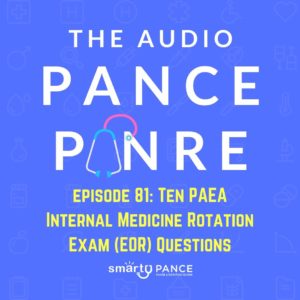 Welcome to episode 81 of the Audio PANCE and PANRE PA Board Review Podcast.
Welcome to episode 81 of the Audio PANCE and PANRE PA Board Review Podcast.
Join me as I cover ten internal medicine rotation EOR content blueprint questions from the Smarty PANCE physician assistant board and rotation review website.
Special from today's episode:
- Check out the new Smarty PANCE Internal Medicine Rotation (EOR) Review Course
- Download your Free Trello Smarty PANCE PAEA Internal Medicine EOR Tracking Template
- Take the FREE Internal Medicine Rotation Cardiovascular Practice Exam
- View the interactive Smarty PANCE Internal Medicine Rotation (EOR) Topic List
Below you will find an interactive exam to complement the podcast.
The Audio PANCE/PANRE and EOR PA Board Review Podcast
I hope you enjoy this free audio component to the examination portion of this site. The full board review course includes over 2,000 interactive board review questions and is available to all members of the PANCE and PANRE Academy and Smarty PANCE.
- You can download and listen to past FREE episodes here, on iTunes, on Google Play Music or Stitcher Radio.
- You can listen to the latest episode, take an interactive quiz, and download more resources below.
Listen Carefully Then Take The Practice Exam
If you can't see the audio player click here to listen to the full episode.
Podcast Episode 81: Ten Internal Medicine EOR Cardiology Questions
The following questions are linked to PAEA Content Blueprint lessons from the Smarty PANCE and PANRE Board Review Website. If you are a member, you will be able to log in and view this interactive video lesson.
1. 55-year-old woman is admitted to the hospital because she has shortness of breath and pain on both sides of her chest with deep breathing, which has worsened over the past five days. In recent weeks, she has been feeling fatigued and has had low-grade fevers and night sweats, and was found to have a new cardiac murmur on examination. Her temperature is 38.1°C (100.6°F), pulse is 106/min, respirations are 26/min, and blood pressure is 136/88 mm Hg. She appears diaphoretic and is in mild respiratory distress. Cardiac auscultation reveals a faint systolic murmur heard over the lower left sternal border. Her neck veins are distended and abdominal examination shows hepatomegaly. Which of the following is the most likely cause of her clinical presentation?
A. Fat embolism
B. Infective endocarditis
C. Myocardial infarction
D. Rheumatic fever
E. Small cell lung cancer
2. A 54-year-old man comes to the emergency department following a four-day history of left-sided chest pain and shortness of breath. One week ago, he experienced upper respiratory symptoms along with myalgias and general fatigue. He has no known past medical history. He has not traveled outside the US. His temperature is 38.1°C (100.6°F), pulse is 104/min, respirations are 17/min, oxygen saturation is 94% on room air, and blood pressure is 100/72 mm Hg. Physical examination shows an ill-appearing man with bibasilar rales, jugular venous distention of 11 cm with no murmurs, rubs, or gallops, and 1+ bilateral pitting edema of the lower extremities. His labs are within normal limits and his blood cultures are negative. An echocardiogram shows an ejection fraction of 35%. Which of the following is the most likely cause of this patient's condition?
A. Adenovirus
B. Coxsackie A virus
C. Staphylococcus aureus
D. Corynebacterium diphtheriae
3. A 42-year-old woman comes to the emergency department because of chest pain, dyspnea, and lightheadedness. She recently recovered from a presumed viral upper respiratory infection and has a 10-year history of systemic lupus erythematosus. Physical examination shows a decrease in systolic blood pressure by 20 mm Hg during inspiration. An ECG is shown here. Which of the following is the most likely diagnosis?
A. Aortic dissection
B. Tricuspid regurgitation
C. Pericardial effusion
D. Aortic stenosis
E. Mitral stenosis
4. A 57-year-old man comes to the emergency department because of intermittent, severe leg pain in both his calves for 2 weeks. He has a history of untreated high blood pressure, diabetes, and high cholesterol. For the past 3 years, the pain started after walking three blocks and only going away upon resting. In the past 2 weeks, he has had the same pain at rest. His temperature is 36.5°C (97.7°F), pulse is 78/min, respirations are 17/min, and blood pressure is 160/89 mm Hg. Examination shows both calves are atrophied and there is a paucity of hair, but no swelling or discoloration. Additionally, his lower calves are cool to the touch and dusky in appearance. Doppler ultrasound shows perfusion to both feet, and blood pressures of 35/20 mm Hg in the posterior tibial artery are obtained bilaterally. Which of the following is most appropriate next step in management?
A. Immediate high-dose statin therapy
B. Immediately consult vascular surgery
C. Intravenous alteplase
D. Pain control and discharge; refer to vascular surgery as an outpatient
E. Rest, elevate, and compress the affected leg
5. A 6-year-old boy comes to the pediatric clinic because of 4 weeks of fatigue and shortness of breath. His medical history is notable for poor follow-up with yearly check-ups, but his mother notes that he has been fairly healthy for the duration of his life, except for a "bad sore throat that needed antibiotics" about 6 months ago. On examination, the boy appears fatigued, but is appropriately oriented and responsive, and is generally non-toxic appearing. He is afebrile. Cardiac examination is notable for a widely split S2, a quiet S1, and point of maximum impulse displaced to the left. Which of the following is the next best step in the management of this patient?
Elimination tool
A. Digoxin
B. Long-term penicillin
C. Short-term course of clindamycin
D. Reassurance & routine care
E. Intramuscular ceftriaxone
6. A 35-year-old woman, gravida 2, para 1, comes to the office because of her first prenatal visit at 12 weeks' gestation. She has no current concerns, and her first child was born without complications. She has a history of long-standing untreated hypertension. Her temperature is 36.5°C (97.7°F), pulse is 78/min, respirations are 17/min, and blood pressure is 150/89 mm Hg. Which of the following medications would most likely be appropriate as initial treatment?
A. Atenolol
B. Hydrochlorothiazide
C. Labetalol
D. Lisinopril
E. Losartan
7. A 42-year-old man comes to the office for a routine check-up. Medical history includes diabetes mellitus and a long history of smoking. Family history includes coronary artery disease. Temperature is 36.5°C (97.7°F), pulse is 78/min, respirations are 17/min, and blood pressure is 160/89 mm Hg. A repeat blood pressure taken 2 days later shows 143/88 mm Hg. Which of the following is most likely the best initial therapy?
A. Enalapril
B. Furosemide
C. Hydrochlorothiazide
D. Metoprolol
E. Nifedipine
8. A 45-year-old obese Caucasian gentleman arrives at your clinic for a routine check-up after having some blood work done during a workplace health screening. He is found to have an LDL cholesterol level of 550 mg/dL. He states that his father and brother had high cholesterol and both died at a young age from a heart attack. He has a follow-up appointment with his cardiologist because of some occasional chest pain and abnormalities seen on his EKG. Additionally, you notice that he has well-demarcated yellow deposits around his eyes. He is started on high dose statin and his LDL at 12 weeks is 350 mg/dL. What is the next best step in this patient's management?
A. Continue high dose statin, the patient's LDL is at goal
B. Add niacin 100 mg three times daily
C. Add ezetimibe (Zetia) 10 mg daily
D. Add a PCSK9 inhibitor
E. Refer to a lipid specialist
9. A 65-year-old man comes to the emergency department because of progressive dyspnea, coughing, and orthopnea. The patient says that over the past 2 months, he has been feeling fatigued with ordinary physical activity. His medical history is relevant for dyslipidemia, type II diabetes mellitus, and a posterior myocardial infarction 4 months ago. Auscultatory findings reveal a pansystolic murmur over the mitral area. His temperature is 37.5°C (99.5°F), pulse is 90/min, respirations are 17/min, blood pressure is 120/90 mm Hg, and pulse oximetry on room air shows an oxygen saturation of 95%. This patient most likely has which of the following conditions?
A. Aortic stenosis
B. Aortic valve regurgitation
C. Mitral valve regurgitation
D. Mitral valve stenosis
E. Pulmonary stenosis
10. A 43-year-old man with a history of rheumatic fever comes to the primary care clinic for a check up. Cardiac examination reveals a late systolic crescendo murmur with midsystolic click best heard over the apex and loudest just before S2. Which of the following maneuvers will cause an earlier onset of the click/murmur?
A. Inspiration
B. Rapid squatting
C. Standing
D. Hand grip
E. Left lateral cubital position
Looking for all the podcast episodes?
This FREE podcast series is limited to every other episode, you can download and enjoy the complete audio series by becoming a Smarty PANCE member.
I will be releasing new episodes every few weeks. Smarty PANCE is now discounted, so sign up now before it's too late!
Resources and Links From The Show
- Check out the new Smarty PANCE Internal Medicine Rotation (EOR) Review Course
- Download your Free Trello Smarty PANCE PAEA Internal Medicine EOR Tracking Template
- Take the FREE Internal Medicine Rotation Cardiovascular Practice Exam
- View the interactive Smarty PANCE Internal Medicine Rotation (EOR) Topic List
- Follow Smarty PANCE and The Daily PANCE Blueprint on Instagram
- Follow SMarty PANCE and The Daily PANCE Blueprint on Facebook
- My list of recommended PANCE and PANRE review books
- Interactive PANCE and PANRE NCCPA Exam Content Blueprints
- Sign up for the FREE Daily PANCE and PANRE email series
- Join the Smarty PANCE NCCPA Content Blueprint Website
- Get your free Trello PANCE study schedule
- Get 20% of any Picmonic membership by using this link
- Use Code "PALIFE" and get 10% OFF THE RUTGERS PANCE AND PANRE REVIEW COURSE
This Podcast is also available on iOS and Android
- iTunes: The Audio PANCE and PANRE Podcast iTunes
- Stitcher Radio: The Audio PANCE and PANRE Podcast Stitcher
- Google Play: The Audio PANCE and PANRE Podcast Google Play
Download The Content Blueprint Checklist
Follow this link to download your FREE copy of the PANCE Content Blueprint Checklist
Print it up and start crossing out the topics you understand, marking the ones you don't, and making notes of key terms you should remember. The PDF version is interactive and linked directly to the individual lessons on Smarty PANCE.
Download for PANCE Download for PANRE
Podcast: Download (22.7MB) | Embed
Subscribe: Email | RSS | PANCE and PANRE Podcast Player
View all posts in this series
- The Audio PANCE and PANRE Board Review Podcast Episode 1
- The Audio PANCE and PANRE Board Review Podcast Episode 3
- The Audio PANCE and PANRE Board Review Podcast Episode 5
- The Audio PANCE and PANRE Board Review Podcast Episode 7
- The Audio PANCE and PANRE Board Review Podcast Episode 9
- The Audio PANCE and PANRE Board Review Podcast Episode 11
- The Audio PANCE and PANRE Board Review Podcast Episode 13
- The Audio PANCE and PANRE Board Review Podcast Episode 15
- The Audio PANCE and PANRE Board Review Podcast Episode 17
- The Audio PANCE and PANRE Board Review Podcast Episode 19
- The Audio PANCE and PANRE Board Review Podcast Episode 21
- The Audio PANCE and PANRE Board Review Podcast Episode 23
- The Audio PANCE and PANRE Board Review Podcast Episode 25
- Cardiology 1: The Audio PANCE and PANRE Podcast Topic Specific Review Episode 27
- Pulmonology 1: The Audio PANCE and PANRE Podcast Topic Specific Review Episode 29
- Gastroenterology 1: The Audio PANCE and PANRE Podcast Topic Specific Review Episode 31
- EENT 1: The Audio PANCE and PANRE Board Review Podcast Topic Specific Review Episode 33
- Genitourinary 1: The Audio PANCE and PANRE Board Review Podcast Topic Specific Review Episode 35
- Musculoskeletal 1: The Audio PANCE and PANRE Board Review Podcast Topic Specific Review Episode 37
- Reproductive System 1: The Audio PANCE and PANRE Board Review Podcast Topic Specific Review Episode 39
- Episode 41: The Audio PANCE and PANRE Board Review Podcast
- Episode 43: The Audio PANCE and PANRE Board Review Podcast
- Murmur Madness: The Audio PANCE and PANRE Episode 45
- Episode 47: The Audio PANCE and PANRE Board Review Podcast – Comprehensive Audio Quiz
- Episode 49: The Audio PANCE and PANRE Board Review Podcast – Comprehensive Audio Quiz
- Episode 51: The Audio PANCE and PANRE Board Review Podcast – Comprehensive Audio Quiz
- Episode 53: General Surgery End of Rotation Exam – The Audio PANCE and PANRE Podcast
- Episode 55: The Audio PANCE and PANRE Board Review Podcast
- Episode 57: The Audio PANCE and PANRE Board Review Podcast
- Episode 59: Emergency Medicine EOR – The Audio PANCE and PANRE Board Review Podcast
- Episode 61: The Audio PANCE and PANRE Board Review Podcast
- Episode 63: The Audio PANCE and PANRE PA Board Review Podcast
- Podcast Episode 65: Hepatitis B Breakdown With Joe Gilboy PA-C
- Podcast Episode 67: Ten PANCE and PANRE Board Review Audio Questions
- Podcast Episode 69: Ten PANCE and PANRE Board Review Audio Questions
- Podcast Episode 71: Ten PANCE and PANRE Board Review Audio Questions
- Podcast Episode 73: Ten FREE PANCE and PANRE Audio Board Review Questions
- Podcast Episode 75: Ten FREE PANCE and PANRE Audio Board Review Questions
- Podcast Episode 77: The Audio PANCE and PANRE Board Review Podcast
- How to Study for Your PANCE: Podcast Episode 79
- Podcast Episode 81: Internal Medicine EOR Cardiology Questions
- How to Answer the Hardest PANCE and PANRE Test Questions: Podcast Episode 82
- How to Answer Tricky PANCE and PANRE Test Questions Part 2: Podcast Episode 83
- Cardiac Pharmacology Part One: The Audio PANCE and PANRE Episode 84
- Podcast Episode 85: Ten Mixed Multiple Choice Questions
- How to Be a Better PA Part 1: Nurses, Lab Techs, and X-Ray Technicians
- Podcast Episode 87: Ten Internal Medicine EOR Questions
- How to Be a Better PA Part 2: Medical Staff, Administrators, and Supervisors
- Podcast Episode 89: Ten PANCE, PANRE, and Rotation Review Questions
- Podcast Episode 90: Ten PANCE, PANRE, and Rotation Review Questions
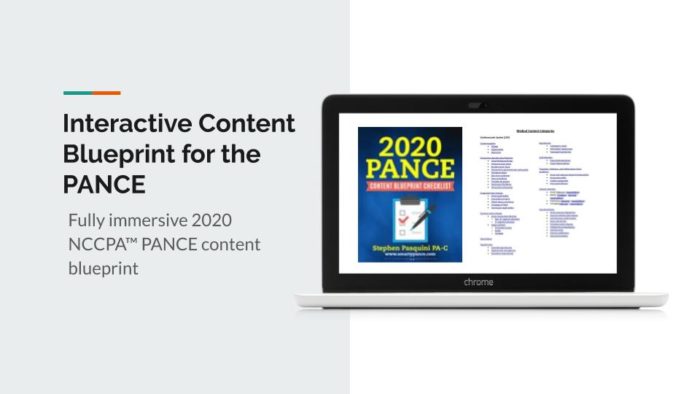
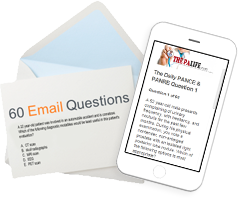
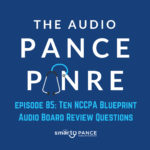




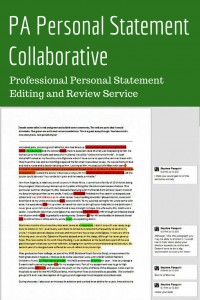








Leave a Reply